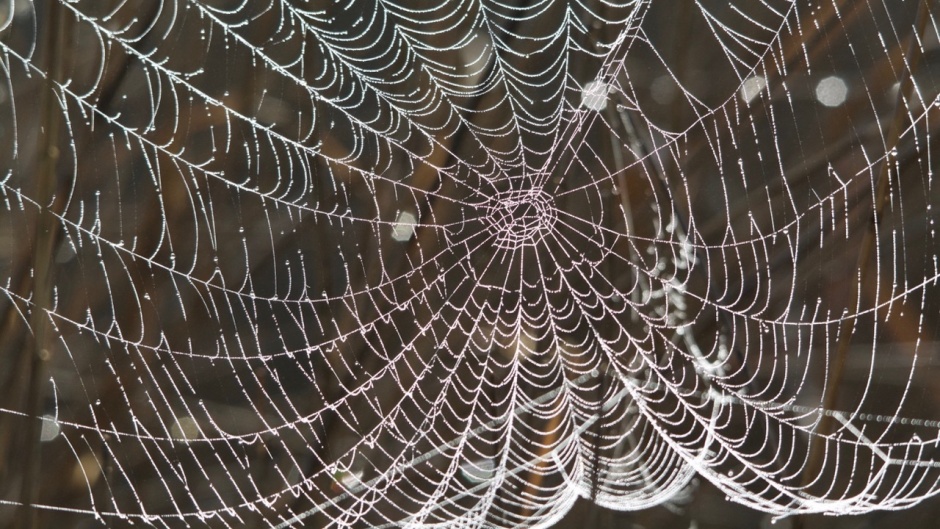Spiderwebs can teach engineers a great deal about molecular design. But the question that arises how was the internal structure of the spiderweb designed?
 A spiderweb. / Photo: Antonio Cruz
A spiderweb. / Photo: Antonio Cruz
His confidence is severed, and his trust is a spider's web. (Job 8:14)
There are two Hebrew terms translated in the Bible as “spiderwebs”.
One of them is gurim, which occurs in Isaiah 59 v 5-6. They hatch adders' eggs; they weave the spider's web; he who eats their eggs dies, and from one that is crushed a viper is hatched. Against the background of Israel’s sin, which separated the people from their God, the prophet reminds them that their hands are stained with blood, wickedness, deceit and injustice. Incubating vipers’ eggs and weaving spiders webs means, in this context, by participating in the evil of other nations, they had ended up getting caught in webs which, like those of spiders, seem weak but can trap their victims with lethal force.
The second term is báyith, which conveys an image of fragility: His confidence is severed, and his trust is a spider's web. (Job 8:14). Here it is a question of the false expectations of the hypocrites, whose supposed merits and self-sufficiency are like a fragile figment of their own imagination. The renowned Biblical commentator Matthew Henry wrote the following: “There is a great difference between the work of a bee and that of a spider. The diligent believer, after the fashion of the worker bee, nourishes his hope on the heavenly nectar of God’s Word, whereas hypocrites, like the spider, weave their hopes on the basis of the false assumptions they fabricate concerning God, as if God were like them. Like the spider in its web (its home), that is how the hypocrite sustains himself in his “home”.
There is actually a third Hebrew term, masséketh, which literally means “a weaver’s pattern”, and which is the term used in Judges 16:13-14. Then Delilah said to Samson, “Until now you have mocked me and told me lies. Tell me how you might be bound.” And he said to her, “If you weave the seven locks of my head with the web and fasten it tight with the pin, then I shall become weak and be like any other man.” So while he slept, Delilah took the seven locks of his head and wove them into the web. And she made them tight with the pin and said to him, “The Philistines are upon you, Samson!” But he awoke from his sleep and pulled away the pin, the loom, and the web. Little by little Samson’s heart was being softened by Delilah’s insistence, and her hypocrisy.
The design of the spiderweb, and that of the unique properties of the silken threads that they are made of, means that when they are subjected to pressure, only one thread breaks, while the rest remains intact. This has surprised scientists, as it not how manmade engineering structures behave. Any thread can be sacrificed and be allowed to break so that the other threads need not break.
The secret of this quality lies in the specific molecular structure of silk, which is capable of changing its mechanical properties while it is being stretched as a result of the pressure exerted by the air or by any animal. A great deal of strength is needed to break a silk thread because the proteins of silk remain bonded by means of sticky hydrogen bonds.
Besides, the fine microstructure of spiderweb silk is perfectly designed to be able to collect droplets of dew, which meet the spider’s need for water. There is a single pattern of alternating nanofibers which serve to collect and channel the dew water. This only occurs when the silk is wet, never when it is dry, and does not occur with any synthetic fibre, like nylon for example.
Spiderwebs can teach engineers a great deal about molecular design, but the question that arises how was the internal structure of the spiderweb designed? By chance, by the spider itself, or by an intelligent God?

Las opiniones vertidas por nuestros colaboradores se realizan a nivel personal, pudiendo coincidir o no con la postura de la dirección de Protestante Digital.
Si quieres comentar o